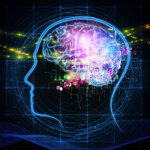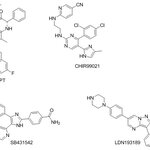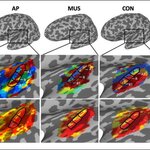Neuroscience

For nearly as long as man has traveled into space, it has been known that it brings a greater risk of fainting upon return; and the longer the time in a gravity-free environment like space, the greater the risk appeared.
Orthostatic hypotension is the technical term for a temporary drop in blood pressure when a person stands up after sitting or lying down because blood rushes to the feet, away from the brain. Dizziness or fainting due to changes in blood flow can occur after lengthy bed rest, among people with certain health disorders or, in the case of astronauts, being in a low-gravity…

Optogenetics biotechnology, using light to manipulate neurons so that they can be turned on or off, has led to a device that replicates the way the brain stores and loses information.
The new chip is based on an ultra-thin material that changes electrical resistance in response to different wavelengths of light, enabling it to mimic the way that neurons work to store and delete information in the brain.
Developed at RMIT's MicroNano Research Facility, the technology is compatible with existing electronics and has also been demonstrated on a flexible platform, for integration into wearable…

A statistical correlation showed nearly a 50 percent increased risk of dementia among patients aged 55 and over who had used strong anticholinergic medication
to contract and relax muscles
daily for three years or more.
Anticholinergic drugs work by blocking acetylcholine, a chemical that transmits messages in the nervous system and is prescribed to treat a variety of conditions, including chronic obstructive pulmonary disease, bladder conditions, allergies, gastrointestinal disorders and symptoms of Parkinson's disease. Though they can have short-term side effects, including…

Scholars recently characterized plasma levels of the biomarker dehydroepiandrosterone (DHEA) and its sulfated form (DHEAS) – jointly referred to as DHEA(S) – to be biological determinants of chemobrain, difficulties related to memory and attention in cancer patients even months after completing their treatment.
DHEA(S) are neurosteroids that help to regulate brain development, but it was previously unknown whether their levels correlate with cognitive function or are associated with the onset of chemobrain.
The study showed that early-stage breast cancer patients with higher plasma DHEAS…

I enjoy hearing about or even falling for a good harmless prank — and I certainly enjoy pulling a child or two’s string, in a cheerful, happy way, just to keep them on their toes — so, April Fools’ is one of my favorite days of the year.
The holiday underscores how important surprises are for our brains. Of course, one hopes those surprises will be delightful ones!
Your brain is actually masterful at connecting the dots and jumping rapidly to a strong conclusion. Making quick decisions on the basis of limited evidence has been a key to our survival on the planet. It’s one of humankind’s…

A woman in Scotland can feel virtually no pain due to a mutation in a previously-unidentified gene, FAAH-OUT, according to a new research paper in the British Journal of Anaesthesia.
She also experiences very little anxiety and fear, and may have enhanced wound healing due to the mutation
At age 65, the woman sought treatment for an issue with her hip, which turned out to involve severe joint degeneration despite her experiencing no pain. At age 66, she underwent surgery on her hand, which is normally very painful, and yet she reported no pain after the surgery. Her pain…

Neuronal
loss/destruction is the leading cause of symptoms in patients suffering from
neural injury or neurodegenerative disorders.
Following neural insult
astrocytes proliferate and become active glial cells to form glial scarring in
order to protect neighboring tissue from further damage.
The downside to this
scarring is the inhibition of neuronal growth and synaptic transmission which
would allow for the recovery following the insults mentioned above.
Recent
research from Penn State University has resulted in a protocol involving four
small molecules that…

Perfect pitch may be more strongly under genetic control than previously thought, according to a new study.
Mozart, Bach, and Beethoven were able to precisely identify musical notes and there is certainly a genetic component to music like there is math or sprinting - while anyone can be functional with practice being truly great may take biology. Perfect (absolute) pitch is rare, even among expert musicians, and the relative contribution of genetics and experience to this ability remains debated.
To try and determine how much was nature versus nurture, researchers compared auditory cortex…

Love is a complex topic. You love your dog differently than you love chocolate. There are times when you might put your dog, or a loved one, ahead of yourself, but you would never jump in front of a moving car to save chocolate.
The altruism of love has been a philosophical topic for centuries and more recently a scientific one. A current belief somewhat shared by neuroscientists, psychologists and evolutionary biologists is that altruism probably evolved in social species as a strategy for ensuring the survival of relatives, like offspring, and some some argue that would apply to all…

Long before human ancestors began hunting large mammals for meat, a fatty diet provided them with the nutrition to develop bigger brains, according to a paper in Current Anthropology.
The paper argues that our early ancestors acquired a taste for fat by eating marrow scavenged from the skeletal remains of large animals that had been killed and eaten by other predators. The argument challenges the widely held view among anthropologists that eating meat was the critical factor in setting the stage for the evolution of humans. This is anthropology, so they may be making a distinction without a…